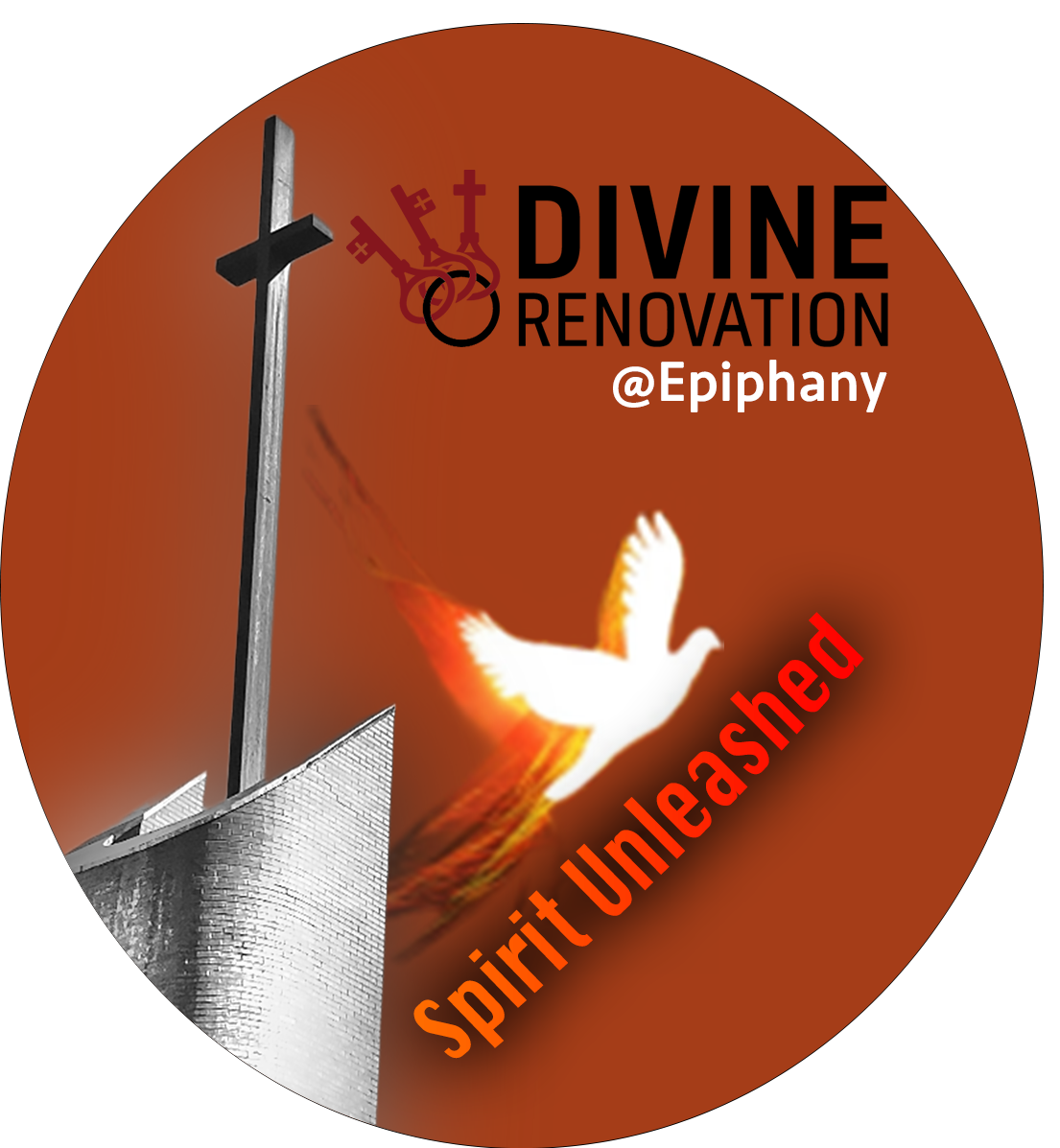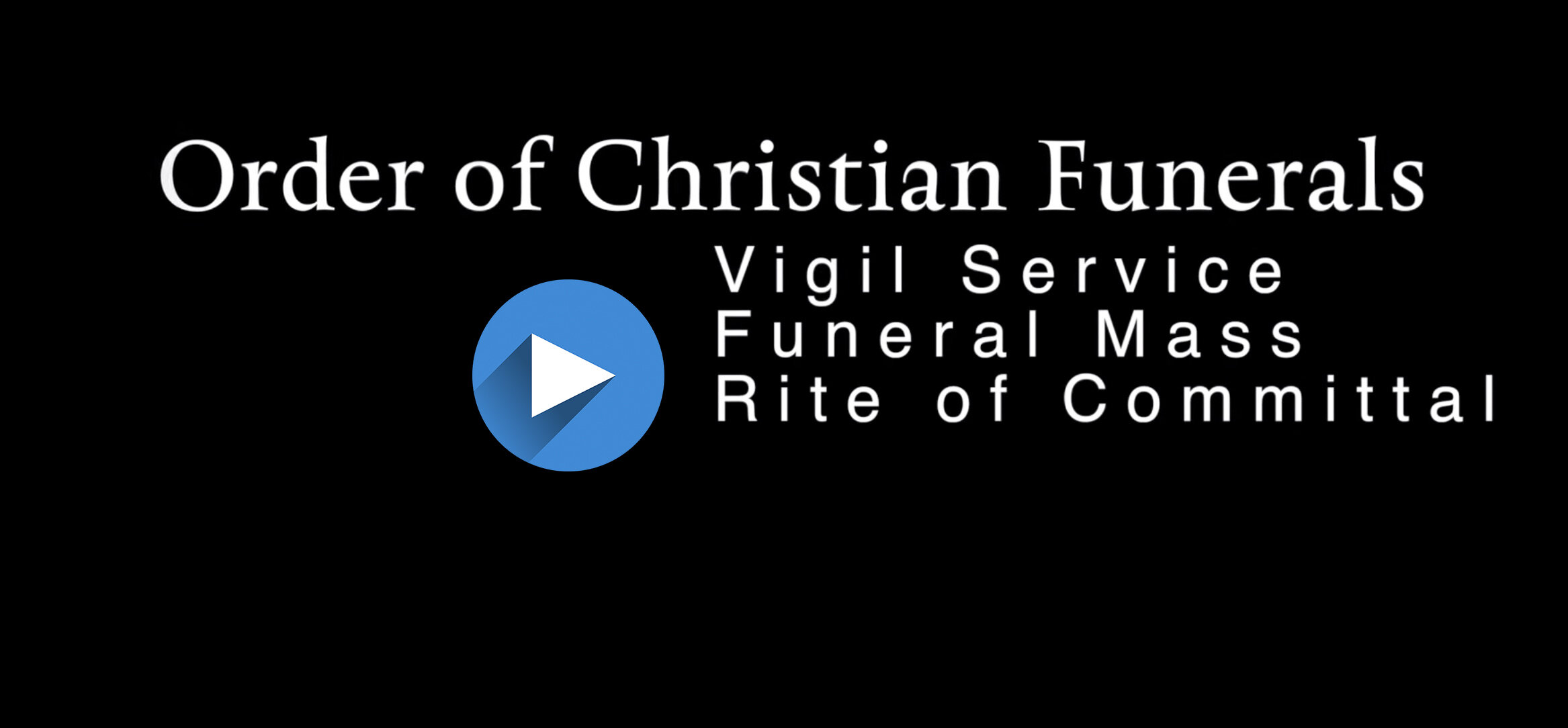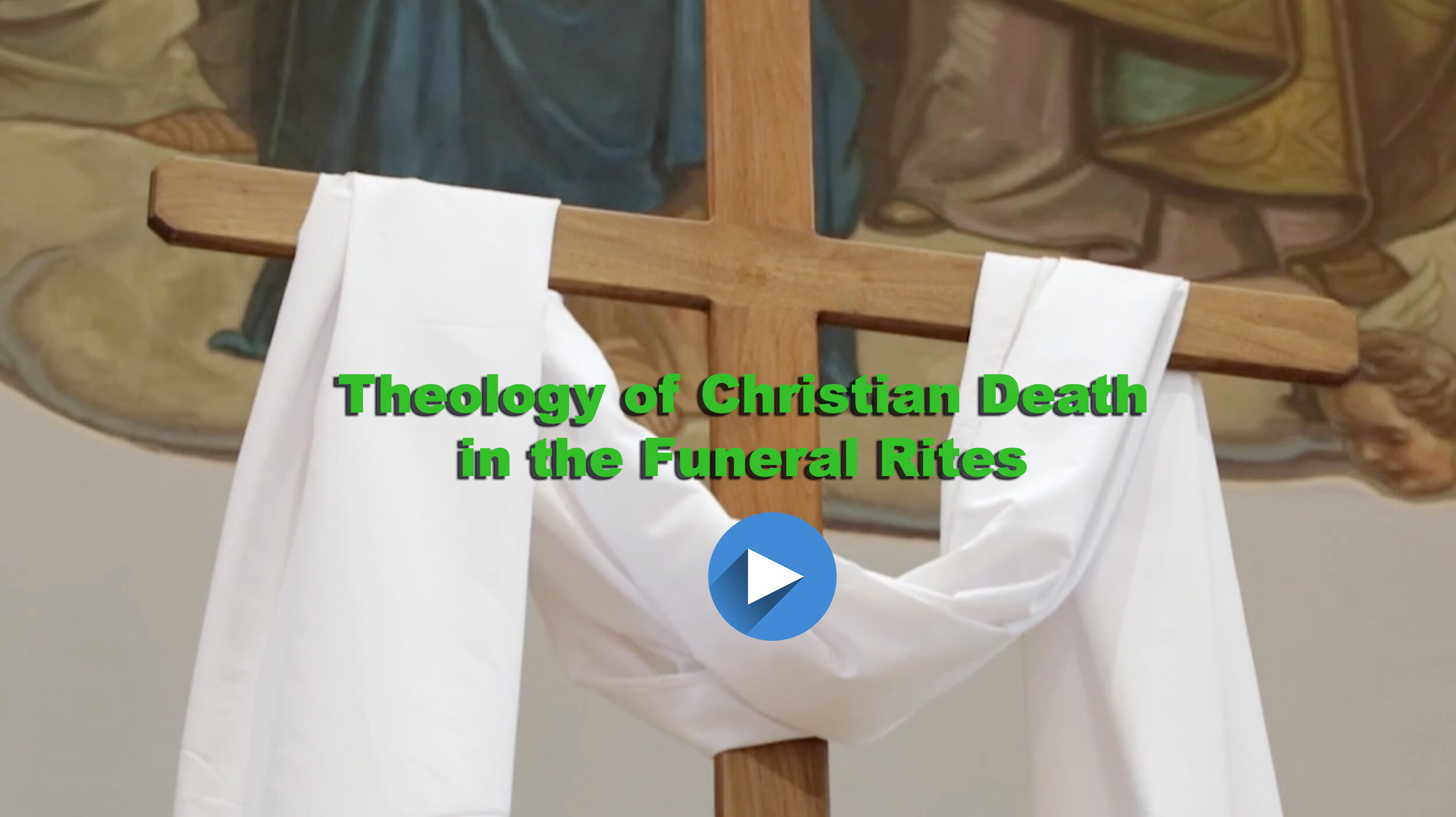Funerals
Many people who attend a Catholic funeral for the first time will often remark how beautiful it is. Steeped in centuries-old custom and ritual as Catholic funeral rites are, that’s understandable.
But the most important aspect about Catholic funerals is that they express the Christian hope in eternal life and the resurrection of the body on the last day. Every component of the Catholic funeral rites should express these fundamental beliefs and hopes. Our funeral rites are not “a celebration of life,” as they are referred to sometimes, but a privileged opportunity to return to God the gift of the deceased, hoping to usher them into paradise with the aid of our prayers. Our love for the departed is expressed after death, above all else, in our prayer for them.
When a loved one dies, those left here to ensure their proper and dignified burial can often get bogged down by all the decisions needing to be made. In that case, we often will miss the opportunity to focus on the faith and hope the Catholic funeral rites express. Bereaved family and friends often will have to make many decisions about their loved one’s funeral, but often may not be fully prepared to do so. Whenever possible, the Church recommends that the family should be involved in planning the funeral rites — from choices of texts and readings to music and liturgical ministers. They may wish to make decisions on some of these components and not on others. They may leave some or all of the decisions up to the parish staff as well.
The wake service is a combination of structured and unstructured moments. The ritual should be in continuity with the less formal moments of gathering and greeting, sharing stories and memories, offering sympathy. The wake is often more intimate than the funeral, and it is more clearly centered on the one who has died. The wake can be a good beginning for the long process of coming to terms with life now that this person is gone. The community shows its support in the wake, the support that will be there in the weeks and months to come.
The funeral liturgy, which usually includes the celebration of the eucharist, allows for scripture readings and liturgical music and various other elements to be chosen by the family or other mourners. In this liturgy and in the rites that take place at the side of the grave, the church holds parting and communion in tension: There is the final commendation of the deceased to the Lord, and the reality of the grave itself, as we console ourselves in faith in our communion with the saints and our waiting for the resurrection of the dead and the life of the world to come. The rites take these things and give them powerful expression in song, word and gesture.
Click here for a guide meant to explain the Catholic funeral rites and give some guidance on the decisions that will need to be made — in light of Church teachings — at the time of a loved one’s death. It might also be helpful in preparing some notes on our own funeral.
For more information, CONTACT Janet Bitner epiphanychurch239@gmail.com



